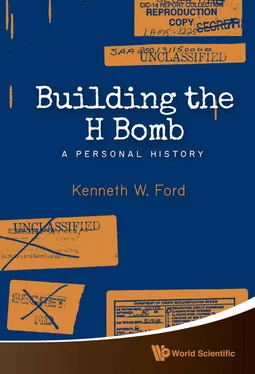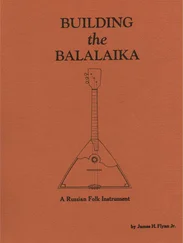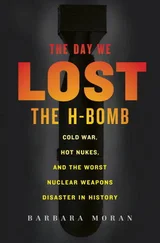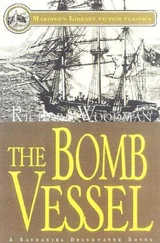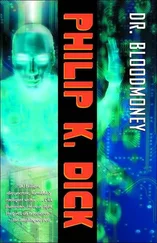The second insight that came from the Ulam-Teller meeting was that radiation, at sufficiently high temperature, is a “substance” with remarkable properties. [7] I discuss the physics of radiation in Chapter 6.
It can flow like a liquid and then push like a giant steel piston. No, not like steel. Stronger than steel. This is not the radiation emitted later in the explosive process by a thermonuclear flame. This is the radiation created by, and flowing from, a fission bomb—radiation that can be channeled until it surrounds a container of thermonuclear fuel and then implodes it. There is at least agreement that this idea of “radiation implosion” was Teller’s. Ulam came with the idea that mechanical forces from a fission bomb could do the compressing. Teller saw that radiation would be an even better agent of compression. (According to the independent analyst Carey Sublette, who has written extensively on nuclear weapons without benefit of security clearance, {13} 13 http://nuclearweaponarchive.org/
the radiation is indeed the “agent” of compression, with most of the actual “push” being supplied by ablation (that is, boiling off) of the outside of the container of thermonuclear fuel. The radiation bath also creates a plasma of electrically charged nuclei and electrons in low-density material just outside this container, further augmenting the push. {14} 14 http://nuclearweaponarchive.org/Usa/Tests/Ivy.html
)
How much compression? It depends on what the thermonuclear fuel is and, in any case, is not publicly known. But it is huge. Ten-fold? Twenty-fold? A hundred-fold? A thousand-fold? It is enough to stimulate a high rate of thermonuclear reaction in the fuel while keeping the volume occupied by the burning fuel sufficiently small that the radiation confined within that volume can’t soak up too much of the total energy.
We tend to think of solid matter as incompressible—hard stuff of fixed volume—but it does in fact shrink and expand. The girders of a steel bridge that together span a thousand feet in the summer may shrink to 999 feet, 4 inches on the coldest winter day. Imagine instead (if you can!) a ten -fold compression in each dimension. The bridge would be a hundred feet long and a girder that was a foot across would be reduced to a width of little more than an inch. A cube of the original steel two inches on a side would weigh a little more than two pounds—easy to hold in your hand. A cube of the same volume of the compressed steel would weigh more than a ton.
The physics of nuclear weapons concerns more than nuclear reactions. It also concerns the properties of matter at temperatures and pressures and densities light years removed from anything that can be tested in the laboratory. Edward Teller and Stan Ulam were among those theorists whose ingenuity allowed them to visualize and to calculate what would go on at these extreme conditions. What makes this possible? The physicists’ knowledge that the laws of electromagnetism and of mechanics, both classical and quantum, extend to domains far beyond direct observation; and their understanding that ultimately, no matter what the conditions, one is dealing with the same electrons and nuclei and photons as in the “ordinary” world around us.

Scientists and engineers in the Soviet Union were not far behind those in the United States in developing and testing nuclear weapons (actually, for deliverable thermonuclear weapons, they were briefly ahead {15} 15 Holloway, Stalin and the Bomb, p. 307.
). From August 1945, when the Soviets launched a serious program to develop an atomic bomb, {16} 16 Holloway, Stalin and the Bomb, p. 196.
until the explosion of “Joe 1” (Joe for Joseph Stalin) in August 1949, only four years elapsed. Without the espionage of Klaus Fuchs (and some others) it would have taken longer. But perhaps not a great deal longer. The USSR had a complement of nuclear scientists as competent as those in the United States. And not just competent. Some, like Andrei Sakharov, Vitaly Ginzburg, and Yakov Zeldovich, were as brilliant as the best in the West.
What about radiation implosion? When was the Teller-Ulam idea duplicated in the USSR? Interestingly, not until 1954. {17} 17 Goncharov, “American and Soviet,” p. 1041.
This was Sakharov’s “third idea.” {18} 18 Sakharov, Memoirs, p. 182.
In his Memoirs, Sakharov avoids revealing secret information about the Soviet thermonuclear program by speaking enigmatically only of the “first idea,” the “second idea,” and the “third idea.” By now it is well known what these ideas were. {19} 19 Goncharov, “American and Soviet,” pp. 1038–1041.
The first idea, advanced by Sakharov in 1948, was the Sloika, or “layer cake,” a design much like the “alarm clock” that Teller and Richtmyer had proposed in 1946, and, so far as is known, conceived without the help of espionage. {20} 20 Holloway, Stalin and the Bomb, p. 298.
As initially imagined, the layer cake was to have alternating layers of uranium-235 and deuterium. {21} 21 Goncharov, “American and Soviet,” p. 1038.
Sakharov and his team pushed hard on Sloika and indeed succeeded in incorporating it into what was the world’s first deliverable thermonuclear weapon, [8] It was a “thermonuclear weapon” in the sense that more than a token part of its energy—about 15 to 20 percent—was contributed by thermonuclear reactions. {22}
detonated in August 1953.
The “second idea,” which Sakharov attributes to his colleague Vitaly Ginzburg, {23} 23 Sakharov, Memoirs, p. 102.
was advanced in the Soviet Union in 1949. It proposed replacing deuterium as the thermonuclear fuel by a particular form of the compound lithium hydride in which the lithium is—either wholly or in substantial part—the isotope lithium-6 and the hydrogen is “heavy hydrogen,” or deuterium. [9] Ginzburg (as I learned from Zhores Alferov) adopted the code name Lidochka for this compound. Lidochka is the diminutive of the Russian female name Lida, which in turn bears a similarity to the chemical formula LiD.
I will have more to say about this compound—lithium-6 deuteride, as it is often called—in Chapter 9. In the United States, it was proposed by Edward Teller as a thermonuclear fuel in 1947. {24} Airdrops of weapons containing this solid thermonuclear fuel occurred first in the Soviet Union in November 1955 {25} and in the United States (over Bikini atoll) six months later, in May 1956. {26} The two countries were never far apart in their developments of thermonuclear weapons.

I’ve been told that some historians of science have asked the question: Why did it take so long for scientists in the United States to come up with the idea of radiation implosion? Nearly nine years elapsed between the first discussions of a possible H bomb in 1942 (see Chapter 9) and the Teller-Ulam idea that made it practical in 1951. Just as pointedly, one could ask the same question of the Soviet scientists, where Sakharov’s “third idea” of radiation implosion came in 1954, also after nearly a decade of work on thermonuclear weapons, including periods both before and after Klaus Fuchs passed along some significant information in 1948 (which I shall discuss in Chapter 8). Both questions have, I think, the same answer: inflexibility. The scientists in both countries were like horses wearing blinders. Each group was pursuing a particular path and could see ahead but not to the side. In the United States the view ahead was of the classical Super. In the Soviet Union it was of the layer cake. Only when the view ahead got cloudy—when, in the United States, it looked more and more like the classical Super wouldn’t work, and, in the Soviet Union, it looked more and more like the layer cake could never reach into the megaton range—only then did the scientists cast off their blinders and look in new directions.
Читать дальше
